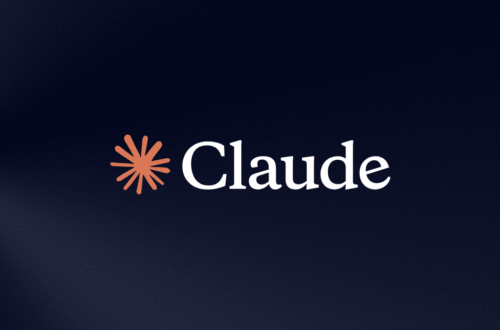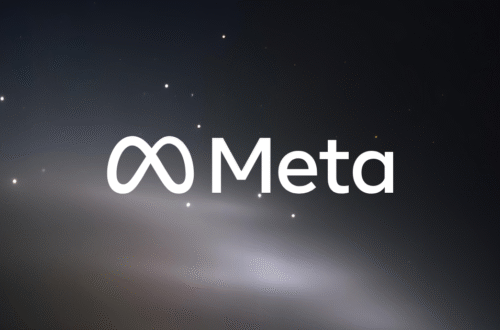Just when you thought the AI hype cycle might be taking a breather, OpenAI & Google decided to drop a pair of reality-bending bombs on us. Within 24 hours of each other, both companies unveiled their vision for the future of AI: real-time, conversational, multimodal agents that can see your world & talk to you about it. This isn’t just another incremental update to a chatbot that’s slightly better at writing poems about your cat. Nope. This is a full-blown paradigm shift, a frantic race to build the first true AI companion, & the starting pistol just went off. The two heavyweights in the ring are OpenAI’s shiny new GPT-4o & Google’s ambitious Project Astra.
So, What Is a “Real-Time AI Agent” Anyway?
Forget typing into a box & waiting for text to spit back out. We’re talking about an AI you interact with like another person. You point your phone’s camera at something, & the AI sees it. You talk to it, & it hears you. It talks back instantly, with tone & emotion, understanding the context of your conversation & your environment. The demos felt straight out of the movie Her, and the tech community is collectively losing its mind. The key here is latency-the delay between you speaking & the AI responding. To feel natural, that delay needs to be minimal, mirroring human conversation. Both OpenAI & Google claim to have cracked this nut, but their approaches & their current reality are worlds apart.
Meet the Contenders
OpenAI’s GPT-4o: The “omni” Model That Actually Shipped
On May 13, OpenAI held its Spring Update event & dropped GPT-4o. The “o” stands for “omni,” because it natively processes text, vision, & audio all in one single, unified model. This is a monumental architectural leap. Before, a request like this would involve a messy pipeline: one model for voice-to-text (like Whisper), another for the “brains” (GPT-4), & a third for text-to-voice. That pipeline is slow & clunky. By unifying everything, GPT-4o achieves incredible speed.
The stats are pretty wild. OpenAI claims it can respond to audio in as little as 232 milliseconds, with an average of 320 milliseconds. That’s you-and-me-having-a-chat fast. It matches GPT-4 Turbo’s intelligence on text & code benchmarks but blows it out of the water on vision & audio tasks. And here’s the kicker for developers & businesses: it’s 50% cheaper in the API. This isn’t some far-off dream; the text & image capabilities are already rolling out to all ChatGPT users, including those on the free tier. The jaw-dropping voice & video mode is coming to Plus users in the coming weeks.
The live demo was… a spectacle. The AI was charming, a bit flirty, and outrageously helpful. It saw a math problem on a piece of paper & walked the presenter through solving it without giving away the answer. It translated a conversation between Italian & English in real time. It even commented on the presenter’s emotional state based on his breathing. Yeah, it was a little canned-“Oh, an OpenAI hoodie, what a great choice!”-but it was a *live* demo of a product that is actually being released. That’s the point.
Google’s Project Astra: The Slick, Ambitious Counterpunch
Less than 24 hours later, at its massive Google I/O conference, Google hit back with Project Astra. The name itself-“Advanced Seeing and Talking Responsive Agent”-tells you everything. Unlike GPT-4o, Astra isn’t a product you can use today. It’s a “project,” a vision for a “universal AI agent” powered by Google’s Gemini models.
The demo video was slick. Maybe too slick. It was presented as being filmed in a single take, a clear jab at past criticisms of Google faking its AI demos (remember the original Gemini video scandal?). The agent, running on a phone, identified objects, explained code on a monitor, created a story about a pair of crayons, & even remembered where the user left their glasses a minute earlier by recalling the video stream. This continuous video processing & temporal memory is a potential killer feature that OpenAI didn’t explicitly show.
Google’s vision is arguably bigger, or at least more sci-fi. They showed Astra running on prototype smart glasses, hinting at a future of ambient computing where your AI assistant is always with you, seeing what you see. It was a powerful presentation, but it felt reactive, like a panicked response to OpenAI’s event. It’s an amazing concept video, but for now, that’s all it is.
The Showdown: So Who’s Actually Winning?
Let’s cut the corporate PR fluff. As of today, OpenAI is winning, and it isn’t close. Why?
They shipped. It’s that simple. GPT-4o, for all its demo-day cheesiness, is a real product that is rolling out to hundreds of millions of users. You can’t use Project Astra. You can’t sign up for a waitlist. It’s vaporware until it’s not. Google showed a movie trailer; OpenAI released the movie.
On transparency, OpenAI published its latency numbers. Google just said Astra is fast. On architecture, OpenAI’s unified omni-model seems like a more elegant & efficient long-term solution. On availability, GPT-4o is even coming to the free tier, a ridiculously aggressive move to solidify its user base.
Google’s demo might have hinted at more advanced memory features, but a feature in a pre-recorded video is worth a lot less than a slightly less advanced feature in a product you can actually use next month. Right now, Google is playing catch-up, trying to convince the world its vision is grander while OpenAI is busy onboarding users.
The Real-World Impact & Ethical Minefield
This race has huge implications. For developers, the 50% price drop for GPT-4o in the API is a game-changer. Multimodal apps that were once too slow or expensive are now on the table. For the rest of us, this is the first taste of what a truly useful AI assistant could be-a tutor, a translator, a creative partner.
But let’s not get carried away by the shiny demos. The ethical red flags are waving like they’re in a hurricane. These agents see & hear your life. The potential for privacy violations is staggering. How is this data stored? Who has access? How do you prevent this from becoming the ultimate surveillance tool?
And then there’s the personality. The charming, helpful voice assistant is a powerful tool for engagement. It’s also a powerful tool for manipulation. The recent controversy over OpenAI’s “Sky” voice, which sounded uncannily like Scarlett Johansson (who voiced the AI in *Her*), is a perfect example. Johansson released a statement saying she had declined OpenAI’s offer to use her voice, forcing them to pull it. This incident highlights the critical need for best practices around AI personality, consent, & digital likeness.
Actionable Tips & Resources
- For Everyone: Get familiar with the new ChatGPT. When the new voice mode drops, try it out for small tasks like brainstorming ideas or summarizing an article for you. But be mindful of what personal info you share via your camera or mic.
- For Developers: Re-evaluate your product roadmap. Can you integrate vision or real-time audio? The GPT-4o API makes this cheaper & faster than ever. Start experimenting now.
- For Learning More: Don’t just take my word for it. Watch the demos & read the official announcements yourself.
This AI agent race is just getting started. OpenAI landed a powerful first punch with a real product, while Google countered with a compelling, if distant, vision. The next year will be defined by how these incredible capabilities move from staged demos to robust, safe, & genuinely useful tools on the devices we use every day. The winner won’t be the one with the slickest video, but the one who builds an agent we can trust.


